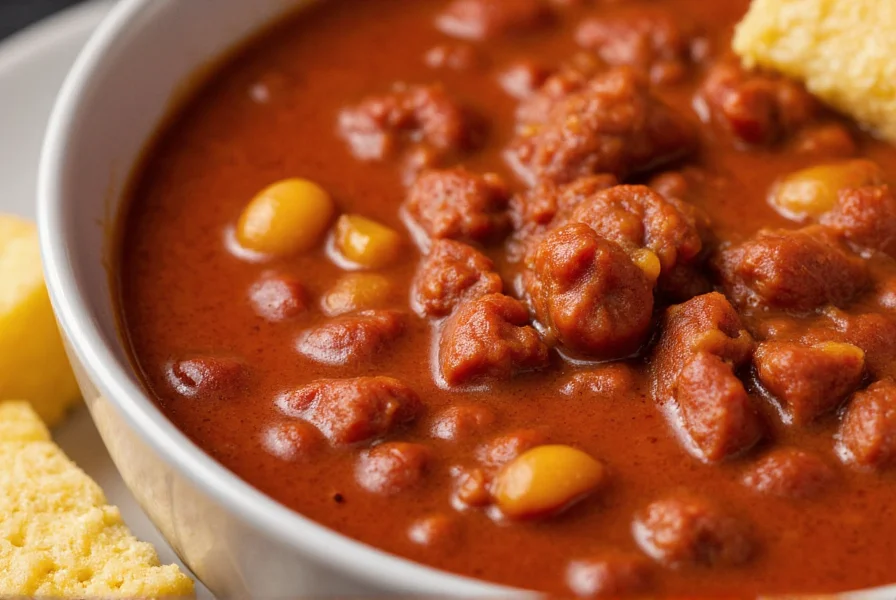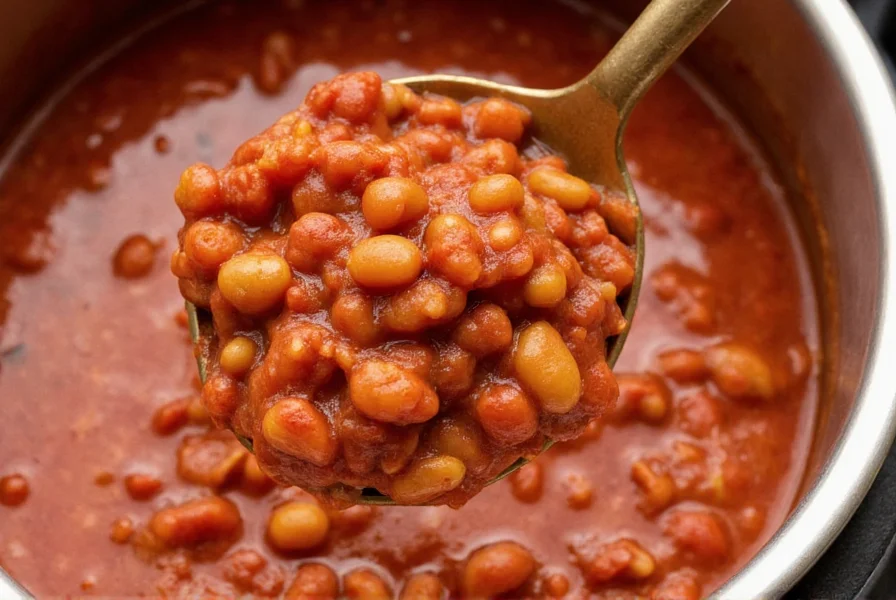For decades, canned chili without beans has been a staple in American pantries, offering convenience without compromising on the rich, meat-forward flavor profile that defines authentic chili con carne. Unlike its bean-containing counterpart, this version adheres to regional culinary traditions that prioritize meat and spice complexity over legume additions.
The Origins of Beanless Chili Tradition
The absence of beans in certain chili varieties isn't a modern marketing gimmick—it's deeply rooted in regional culinary history. Texas-style chili, often called "red chili" or "chili con carne" (chili with meat), traditionally contains no beans. Early chili recipes brought to Texas by Mexican immigrants and cowboys focused on meat, chilies, and spices, with beans considered filler rather than essential ingredients.
When commercial canning operations began in the early 20th century, they preserved these regional distinctions. While some manufacturers created bean-inclusive versions for broader appeal, others maintained the beanless tradition that remains popular today, particularly in southwestern United States.
What's Inside Canned Chili Without Beans
Examining the ingredient list of quality canned chili no beans reveals a straightforward composition:
| Primary Ingredients | Common Variations | Typical Additives |
|---|---|---|
| Ground beef (or sometimes venison) | Beef chunks for texture | Tomato paste |
| Tomato products | Worcestershire sauce | Chili powder |
| Chili peppers (ancho, cayenne, etc.) | Beer or coffee for depth | Garlic powder |
| Onions and garlic | Smoked paprika | Salt and pepper |
The absence of beans creates a thicker, meatier texture and allows the complex spice profile to shine through without competing flavors. This makes canned chili without beans particularly valuable for cooks seeking a pure chili base they can customize.

Nutritional Profile: Beans vs. No Beans
Understanding the nutritional differences between bean-containing and beanless chili helps consumers make informed choices based on dietary needs:
- Protein content: Beanless versions typically have higher protein concentration per serving since meat isn't diluted by beans
- Carbohydrates: Without beans, canned chili no beans contains fewer carbohydrates, making it more suitable for low-carb or keto diets
- Fiber content: Bean-inclusive versions provide more dietary fiber, while beanless chili has minimal fiber unless additional vegetables are added
- Sodium levels: Both varieties contain similar sodium levels for preservation, though low-sodium options exist for canned chili without beans
For those monitoring their nutritional intake, reading canned chili without beans nutrition facts carefully helps determine if it aligns with specific dietary goals. Many brands now offer reduced-sodium versions while maintaining the authentic flavor profile.
Creative Ways to Use Canned Chili Without Beans
The versatility of canned chili no beans extends far beyond simply heating and serving. Professional chefs and home cooks alike appreciate this pantry staple for its adaptability:
- As a flavor base: Use as the foundation for custom chili by adding your preferred spices, vegetables, or even a small amount of beans if desired
- In breakfast dishes: Top scrambled eggs or fold into breakfast burritos for a protein-packed morning meal
- For game day snacks: Transform into chili cheese dogs, nacho topping, or stuffed potatoes with minimal additional preparation
- In baked goods: Incorporate into cornbread batter or use as a topping for savory muffins
- As a sauce alternative: Substitute for tomato sauce in pasta dishes or use as a pizza base for a spicy twist
When enhancing canned chili without beans, consider adding fresh ingredients like diced onions, bell peppers, or a splash of vinegar to brighten the flavor. For those wondering how to make canned chili without beans taste better, a small amount of chocolate or coffee can deepen the complexity without making the dish sweet.

Understanding Canned Chili Labels
Not all products labeled as "chili without beans" are created equal. When selecting canned chili no beans, pay attention to these label elements:
- "Chili con carne" designation: This traditionally indicates a beanless preparation, though labeling regulations vary
- Ingredient quality: Look for products listing specific chili varieties (ancho, guajillo) rather than generic "chili powder"
- Meat content percentage: Higher quality products often disclose the meat content, with premium versions containing 40% or more meat
- Absence of fillers: Authentic versions avoid corn syrup, artificial flavors, and excessive thickeners
For those questioning whether canned chili without beans is authentic, understanding regional traditions helps. In Texas and parts of the Southwest, beanless chili represents the historical preparation method, while bean-inclusive versions gained popularity elsewhere through commercialization.
Frequently Asked Questions
Is canned chili without beans considered authentic chili?
Yes, canned chili without beans follows the traditional Texas-style preparation of chili con carne, which historically contained no beans. Many chili purists consider beanless versions more authentic to the original Mexican and cowboy-era recipes, where beans were viewed as filler rather than essential ingredients.
Why do some canned chili products omit beans?
Manufacturers produce beanless versions to honor regional culinary traditions, particularly Texas-style chili. The absence of beans creates a thicker texture, more concentrated meat flavor, and makes the product suitable for low-carb and keto diets. Some consumers prefer the pure meat-and-spice profile without competing bean flavors.
How can I improve the flavor of canned chili without beans?
Enhance canned chili without beans by sautéing fresh onions and garlic before adding the chili, incorporating a splash of vinegar or lime juice for brightness, adding a small amount of chocolate or coffee for depth, or stirring in fresh herbs like cilantro at the end. For texture, consider adding diced bell peppers or a protein like shredded chicken during reheating.
Is canned chili without beans suitable for special diets?
Canned chili without beans works well for low-carb, keto, and paleo diets due to its higher protein and lower carbohydrate content compared to bean-inclusive versions. However, check sodium levels if following a low-sodium diet, as many canned varieties contain significant salt for preservation. Some brands now offer reduced-sodium options while maintaining flavor.
What's the difference between chili with beans and without beans nutritionally?
Beanless chili typically has higher protein concentration per serving, fewer carbohydrates, and less dietary fiber than versions with beans. A standard serving of canned chili without beans contains approximately 15-20g protein, 10-15g fat, and 10-15g carbohydrates, while bean-inclusive versions might have 12-15g protein, 8-12g fat, and 25-35g carbohydrates with significantly more fiber.











 浙公网安备
33010002000092号
浙公网安备
33010002000092号 浙B2-20120091-4
浙B2-20120091-4